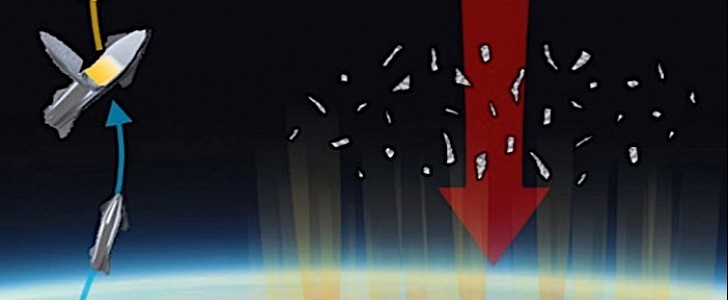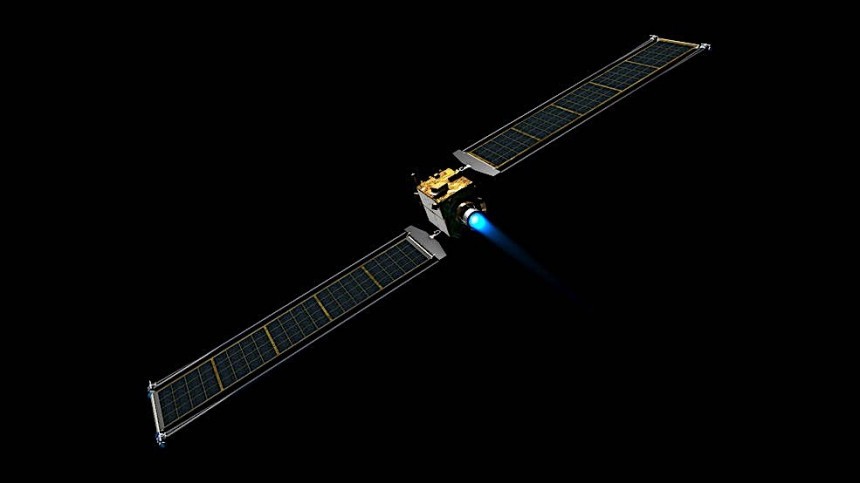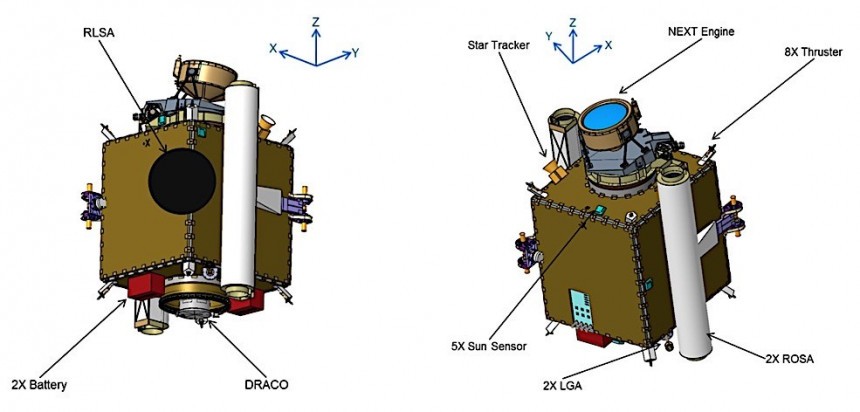Back in May 2021, NASA got together a group of scientists in Vienna, Austria, and gave them an impossible task: find ways to stop a potentially dangerous near-Earth object (NEO) before it slammed into our planet and forever ruined our little corner of paradise. They failed.
The general idea of the tabletop exercise, as NASA called it at the time, was to see if an asteroid, detected about six months prior to impact, could be stopped in its tracks. As it turned out, no technology currently available, not even nuclear devices, would be able to stop it. In the exercise, the asteroid eventually fell in Europe, making a mess of Germany, the Czech Republic, and Austria.
Since then, nothing really interesting has happened on this front. Sure, on September 26, the Double Asteroid Redirection Test (DART) spacecraft will slam into a distant asteroid called Dimorphos, and then we’ll know if the theory of changing a space rock’s trajectory by hitting it really hard can become a reality.
But even if DART is successful, it all boils down to how much advance warning we have. Remember, NASA demonstrated that not even six months are enough to get something together and stop a potential extinction level event from happening.
There must be ways, though, we could do that, if only someone could think about them. Luckily for our descendants, someone did earlier this year, and NASA recognized the merits of the idea by giving them an Innovative Advanced Concepts (NIAC) grant.
That someone is Philip Lubin from the University of California, Santa Barbara, and that something he’s proposing is called PI - Terminal Defense for Humanity. Or, in the scholar’s own words, “a practical and effective method of planetary defense that allows for extremely short mitigation time scales if required.”
The idea relies on an “array of small hypervelocity kinetic penetrators that pulverize and disassemble an asteroid or small comet.” Because “small hypervelocity kinetic penetrators” sounds a bit too academic, we’ll call them space bullets from now on.
These space bullets are not meant to nudge an asteroid away, but literally, shatter it to bits. They could be launched into orbit, or where ever they’re needed, by means of SpaceX’s Falcon Heavy and Starship, or with the help of NASA’s own Space Launch System (SLS).
Space bullets and their launch vehicles could be pre-positioned either here on Earth, or up there on the Moon. Also on the Moon, complementing the existing hardware on Earth, specialized stations would constantly be on the lookout for spaceborne threats.
Lubin does not detail what the bullets will be made of, or how large, but they should be low-cost, have high effectiveness, and made using existing technologies and materials. Most importantly, they should be effective both against threats detected long in advance, and against the asteroids that have sneaked past all the eyes looking at the sky, and got within hours or less of us before being spotted.
When shot against distant targets, the projectiles would split the asteroid into bits that would most likely miss Earth, eventually.
The ones detected in close proximity will also be neutralized, but for the same to happen to their remains, our atmosphere will have to step in and play its part as well and burn the fragments before they reach the surface. Lubin envisions these projectiles as being capable of creating fragments of a maximum of 10 meters (33 feet) in diameter, which the atmosphere should burn with ease.
We’re told “asteroids in the multi-hundred-meter diameter class” would be easy pickings for these space bullets, as even if they would not be capable of completely eliminating the threat, they’d still significantly dimmish the impact’s effects.
The scientist behind this still-in-the-works idea even did some math on how a space bullet would affect its target. He found they’d be effective even against a 50 meters (164 feet) in diameter asteroid (about half the size of the one that exploded over Tunguska in 1908), spotted with just five hours before impact. In case of an asteroid less than half that size, even an intercept two minutes before impact would be enough.
When it comes to larger asteroids, a rock one km (0.62-mile) in diameter would also be stopped, provided we see it 60 days before it destroys large parts of our planet.
The idea is still in its early stages, and a lot of work needs to be done before something truly tangible could result from it. But, provided a space rock doesn’t end us in the decades ahead, we just might become the first species that we know of capable of protecting itself from asteroid extinction.
Since then, nothing really interesting has happened on this front. Sure, on September 26, the Double Asteroid Redirection Test (DART) spacecraft will slam into a distant asteroid called Dimorphos, and then we’ll know if the theory of changing a space rock’s trajectory by hitting it really hard can become a reality.
But even if DART is successful, it all boils down to how much advance warning we have. Remember, NASA demonstrated that not even six months are enough to get something together and stop a potential extinction level event from happening.
There must be ways, though, we could do that, if only someone could think about them. Luckily for our descendants, someone did earlier this year, and NASA recognized the merits of the idea by giving them an Innovative Advanced Concepts (NIAC) grant.
That someone is Philip Lubin from the University of California, Santa Barbara, and that something he’s proposing is called PI - Terminal Defense for Humanity. Or, in the scholar’s own words, “a practical and effective method of planetary defense that allows for extremely short mitigation time scales if required.”
These space bullets are not meant to nudge an asteroid away, but literally, shatter it to bits. They could be launched into orbit, or where ever they’re needed, by means of SpaceX’s Falcon Heavy and Starship, or with the help of NASA’s own Space Launch System (SLS).
Space bullets and their launch vehicles could be pre-positioned either here on Earth, or up there on the Moon. Also on the Moon, complementing the existing hardware on Earth, specialized stations would constantly be on the lookout for spaceborne threats.
Lubin does not detail what the bullets will be made of, or how large, but they should be low-cost, have high effectiveness, and made using existing technologies and materials. Most importantly, they should be effective both against threats detected long in advance, and against the asteroids that have sneaked past all the eyes looking at the sky, and got within hours or less of us before being spotted.
When shot against distant targets, the projectiles would split the asteroid into bits that would most likely miss Earth, eventually.
We’re told “asteroids in the multi-hundred-meter diameter class” would be easy pickings for these space bullets, as even if they would not be capable of completely eliminating the threat, they’d still significantly dimmish the impact’s effects.
The scientist behind this still-in-the-works idea even did some math on how a space bullet would affect its target. He found they’d be effective even against a 50 meters (164 feet) in diameter asteroid (about half the size of the one that exploded over Tunguska in 1908), spotted with just five hours before impact. In case of an asteroid less than half that size, even an intercept two minutes before impact would be enough.
When it comes to larger asteroids, a rock one km (0.62-mile) in diameter would also be stopped, provided we see it 60 days before it destroys large parts of our planet.
The idea is still in its early stages, and a lot of work needs to be done before something truly tangible could result from it. But, provided a space rock doesn’t end us in the decades ahead, we just might become the first species that we know of capable of protecting itself from asteroid extinction.








